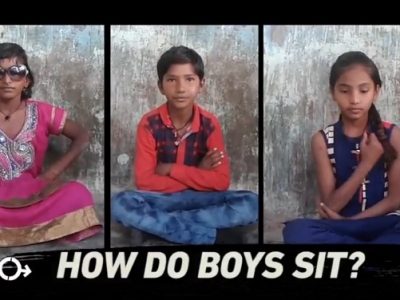
Firi Rahman 的裝置藝術(照片來自 Groundviews,由 Saskia Fernando 藝廊提供/經授權使用)
本文最初發表於 Groundviews(曾獲獎項肯定的斯里蘭卡公民媒體網站);此處所轉載的是全球之聲依內容共享協議,重新編輯過後的精簡版本。
Firi Rahman 生於可倫坡(斯里蘭卡首都),是位跨領域的藝術家。他和鸚鵡一起長大,對於牠們的樣貌和習性都很熟悉;連造訪巴黎的時候他都有種錯覺,好像可倫坡的鸚鵡也隨他一起來到了巴黎──人在異鄉,一邊說著自己不熟悉的語言,一邊在這片土地上匆匆來去、為自己找尋一個新的家園。外來的鸚鵡最終適應了巴黎;但隨著牠們不斷繁衍,牠們又成了當地人眼中可能威脅到當地生態的外來物種。想想那些心繫故土,為求安身立命卻只得離開的人們;這些鸚鵡,同他們是何其相似。
Firi 的作品現今正於可倫坡的 Saskia Fernando 藝廊進行展出,展覽名稱為《如葉飄零》。他在這一系列的作品之中,刻意選用了灰色調來呈現原本斑斕多彩的鸚鵡──這些鸚鵡有的困居籠中,有的卻成群結隊自由飛翔;有些木籠之中不見了鸚鵡,有些鸚鵡則丟失了翅膀或雙腳。

Firi Rahman 的作品(圖片來自 Groundviews,由 Saskia Fernando 藝廊提供/經授權使用)
Groundviews:您想透過這次的展覽來表達些什麼?
Firi Rahman:I am relaying my personal stories through my work. I was a temporary migrant. It was difficult to get a visa and leaving airport was depressing. Now everybody is forced to migrate because of the situation in the country. The birds in Paris are exiled from their country. They were seen as exotic but are now invasive just as plants introduced here from other places are considered invasive.
I am a descendant of Malays from Indonesia and from Indians so I can’t say where I belong or where home is. My family is all abroad and they keep telling me to come and join them but this is where my home is now and where my work is so I don’t want to leave. Everything I love is here. I am not a writer so I can’t express my feelings through words but I do it through my art.
Firi Rahman:我想透過這次的作品,來講述我自己的故事。我也當過短期移民;取得簽證並不容易,往返機場也常令人神傷。現在大環境不好,每個人可能都有不得不離開的時候;就像巴黎的鳥兒,牠們也並非出於自願來到異鄉。人們本來還覺得這些鳥兒富於異國情調,現在卻將牠們視為外來威脅;就好像特意引進外來植物,到頭來又怪它們蔓延太過。
我是印尼馬來人和印度人的後代,所以我到底是哪裡人、哪裡才算是家,我也說不明白。我的家人都在國外,也一直叫我搬去那裡和他們一起,但現在這裡不但是我的家、也是我工作的地方,所以我不想離開。我所愛的一切,都在這裡了。我不是作家,很難把我的感受說得清楚;但我可以透過我的藝術來表達。

圖片來自 Groundviews/經授權使用
Groundviews:您作品中的鸚鵡,又代表了什麼呢?
Firi Rahman:I grew up with parrots. I saw parrots when I went to Paris. The cages represent home. Some birds are missing because they have left. Some of the missing birds signify the passing of loved ones. There are groups of friends leaving the country and leaving their families behind.
Each bird is slowly leaving, selling properties and leaving their roots and loved ones and cutting ties with home. Their lives are in suitcases. The journey is long; the parrots are flying together but some don’t make it to their destination. They are like people who have dreams but those dreams have been broken.
Firi Rahman:我是和鸚鵡一起長大的;在巴黎的時候,我也看到了鸚鵡。籠子呢,就代表了「家」;而失去了蹤影的鳥兒,便是離開了家。牠們有些象徵的是我已經離世的親人;另外的一些,則是我那許多離開家人身邊、前往了其他國家的朋友。
這裡的每一隻鳥兒,都在慢慢地離開──變賣財產,離開了家鄉和親人;切斷聯繫,打包了自己的人生。長路漫漫,鸚鵡成群飛起,但不是每隻鸚鵡都到得了自己想去的地方;這些迷途的鳥兒,正像那些曾經懷抱著夢想、夢想卻已然破碎的人們。
Groundviews:那麼奴隸島的專案,目前進展如何?
Firi Rahman:I am still living in Slave Island [Editor's note: currently known as Kompagngna Veediya]. The project stopped for a while but programmes and presentations are being done and it will be started again soon. They recently begun the highway project again so the community has broken up. Many people have rented their homes to construction workers and gone away.
Firi Rahman:我現在還住在奴隸島。這個專案已經停了一陣子,不過相關的計畫和展出是一直都有,我們也很快會再投入到這個案子裡頭。最近他們重新啟動了高速公路的工程,很多人都把房子租給建築工人就離開了──整個社區,基本上已經是散了。
〔編按:奴隸島已經更名為 Kompagngna Veediya,是當地新興的商業區〕






